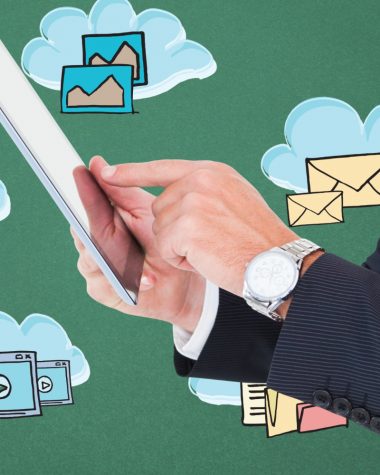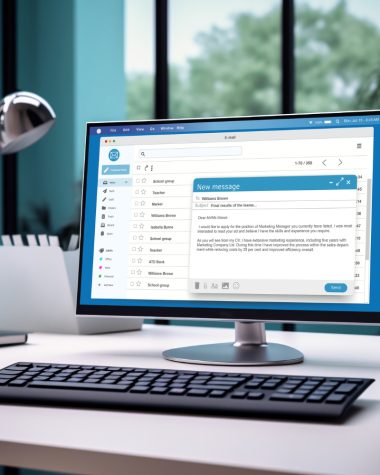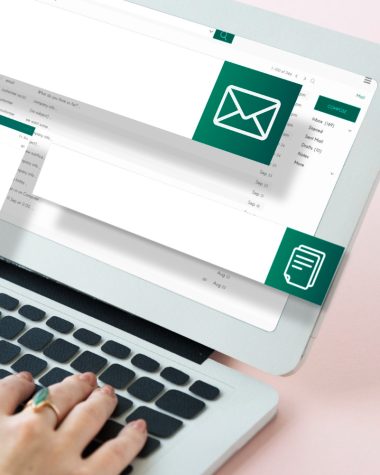In the world of digital marketing, timing can be as crucial as content. The question of when to send marketing emails is one that often stumps even the most seasoned marketers. The answer isn’t straightforward, as it depends on several factors, including your target audience, the nature of your product or service, and even geographical considerations.
However, certain general principles and data-driven insights can help you find the optimal timing for your email campaigns.
Understanding Your Audience
Before diving into specific days and times, it’s important to understand your audience. Who are they? Are they professionals, students, parents, or retirees? Different demographics have different daily routines and habits, which can significantly influence when they check their emails.
Professionals: Often check their emails early in the morning, around 9 AM, when they start their workday. Another peak time is around 1-2 PM, right after lunch, and again at around 4 PM as they wrap up their day.
Students: May check their emails later in the morning or early afternoon, especially if they are not bound by a strict schedule.
Parents: Often busy in the morning with children and household tasks, they may be more likely to check emails in the afternoon or evening.
Retirees: Generally have more flexible schedules and may check their emails at various times throughout the day.
The Best Days to Send Emails
Numerous studies have tried to pinpoint the best days to send marketing emails, and while there are variations depending on the source, some trends are clear.
Tuesday, Wednesday, and Thursday: These days consistently show higher open and click-through rates. Tuesday is often cited as the best day, as it is the first non-Monday workday when people are not overwhelmed by the start of the week. Wednesday and Thursday also perform well, as people are still engaged in their weekly routines but not yet mentally checked out for the weekend.
Monday: While not the top day, Monday can be effective if your audience is in a professional setting. People often check their emails first thing on Monday to catch up on any weekend correspondence or start their week fresh.
Friday: Friday can be a hit or miss. While some people are winding down for the weekend, others might be wrapping up their week and catching up on emails. It can work if your email is related to weekend activities or leisure.
Weekends: Generally, weekends are not ideal for sending marketing emails, especially if your audience is primarily professionals who may not check their work emails over the weekend. However, if your product or service is leisure or hobby-related, weekends can still be effective.
Optimal Times of Day
The time of day when you send your emails can be just as crucial as the day itself. Here’s a breakdown of some optimal times:
Early Morning (6 AM – 8 AM): Emails sent early in the morning have the advantage of being at the top of the inbox when recipients first check their emails. This time works well for professionals and early risers.
Mid-Morning (9 AM – 11 AM): This is one of the most popular times for checking emails. People are generally settled into their day and are more likely to open and engage with emails.
Afternoon (1 PM – 3 PM): After lunch, people often go through their emails again. This can be a good time to send emails, especially if you’re targeting a professional audience.
Late Afternoon (4 PM – 6 PM): As the workday winds down, people often check their emails one last time before heading home.
Evening (7 PM – 9 PM): For certain demographics, such as parents or those who work non-traditional hours, the evening can be a good time to send emails. However, this is generally less effective for B2B marketing.
Testing and Analyzing
While the above guidelines are a good starting point, the best way to determine the optimal time for your specific audience is through testing and analysis. A/B testing different send times and days can provide valuable insights into when your audience is most responsive.
Additionally, analyzing open rates, click-through rates, and conversion rates for emails sent at different times can help refine your strategy.
Consider the Global Audience
If your business caters to a global audience, time zones become a crucial factor. Scheduling emails to reach international audiences at appropriate times can significantly boost engagement. Tools that allow for time zone segmentation and scheduling can be extremely helpful in this regard.
The Role of the Subject Line and Content
While timing is critical, it’s not the only factor that determines the success of an email campaign. The subject line and content quality also play significant roles.
A compelling subject line can entice recipients to open your email, while high-quality, relevant content can keep them engaged and drive conversions. Ensuring that your emails are well-designed and mobile-friendly is also crucial, given the increasing number of people accessing emails on their smartphones.
Avoiding Common Pitfalls
Finally, it’s important to avoid common pitfalls that can negatively impact your email marketing efforts:
Overloading the Inbox: Sending too many emails can lead to subscriber fatigue and increased unsubscribe rates. It’s crucial to find a balance between staying top-of-mind and not overwhelming your audience.
Ignoring Analytics: Failing to analyze the performance of your emails can result in missed opportunities for optimization. Regularly reviewing your email metrics can help you understand what’s working and what isn’t.
Neglecting Personalization: Generic emails are less likely to resonate with recipients. Personalizing your emails based on recipient behavior, preferences, and demographics can significantly improve engagement rates.
The best time to send marketing emails depends on various factors, including your target audience’s habits, the nature of your product or service, and even the geographical distribution of your subscribers. While general trends suggest that mid-week, mid-morning, and early afternoon are optimal, the most effective strategy involves a combination of these insights with thorough testing and analysis.
By understanding your audience, experimenting with different timings, and continually refining your approach based on data, you can significantly improve the success of your email marketing campaigns. Remember, the goal is not just to send emails at the right time but also to provide value through relevant and engaging content.
Top 5 Strategies for Effective Email Marketing Campaigns
Sending marketing emails at the right time is just one piece of the puzzle. To maximize the effectiveness of your email campaigns, it’s crucial to implement a comprehensive strategy that goes beyond timing. Here are five essential strategies to consider:
Personalization and Segmentation
Personalization is one of the most powerful tools in email marketing. It involves tailoring your emails to meet the individual preferences and behaviors of your subscribers. This can range from using the recipient’s name in the subject line to more sophisticated strategies like content based on past purchases or browsing behavior.
Segmentation goes hand-in-hand with personalization. By dividing your email list into smaller groups based on specific criteria (such as demographics, purchase history, or engagement levels), you can send more targeted and relevant content. Segmented campaigns can significantly improve open and click-through rates, as the messages are more likely to resonate with each segment’s interests and needs.
Compelling Subject Lines and Preview Text
The subject line and preview text are the first things recipients see, and they play a critical role in determining whether an email gets opened. A compelling subject line should be concise, intriguing, and directly relevant to the recipient’s interests. Avoid using spammy words or excessive punctuation, as these can trigger spam filters or discourage opens.
Preview text, the snippet that appears next to or below the subject line in many email clients, offers an additional opportunity to hook the reader. This text should complement the subject line and provide a clear indication of what the email contains, encouraging the recipient to open it.
Mobile Optimization
With a significant portion of emails being opened on mobile devices, ensuring your emails are mobile-friendly is crucial. Mobile optimization involves designing emails that are easy to read and interact with on smaller screens. This includes:
Using a responsive design that adjusts to different screen sizes.
Keeping the email layout simple and uncluttered.
Using large, legible fonts and concise text.
Ensuring that buttons and links are easy to tap.
A poor mobile experience can lead to high bounce rates and lost opportunities, so testing your emails across various devices and email clients is essential.
A/B Testing and Analytics
A/B testing, or split testing, involves sending two variations of an email to different segments of your audience to determine which performs better. This can include testing different subject lines, content, layouts, send times, and calls to action. By systematically testing and analyzing the results, you can refine your email marketing strategies to optimize engagement and conversions.
Analytics are equally important. Regularly reviewing metrics such as open rates, click-through rates, conversion rates, and unsubscribe rates can provide valuable insights into what’s working and what needs improvement. Understanding these metrics allows you to make data-driven decisions and continually improve your email campaigns.
Clear and Compelling Calls to Action (CTAs)
A call to action (CTA) is a crucial component of your email, guiding the recipient on what to do next. Whether you want them to make a purchase, download a resource, sign up for an event, or simply read more content, your CTA should be clear, concise, and compelling.
Effective CTAs are typically:
Action-Oriented: Use strong verbs that encourage action, such as “Buy Now,” “Learn More,” or “Download.”
Visually Distinct: Make your CTA stand out with contrasting colors, buttons, or bold text.
Strategically Placed: Position your CTA where it’s easy to find, ideally above the fold or near relevant content.
Aligned with the Email’s Purpose: Ensure that the CTA aligns with the main goal of your email and provides clear value to the recipient.
Implementing these five strategies—personalization and segmentation, compelling subject lines and preview text, mobile optimization, A/B testing and analytics, and clear calls to action—can significantly enhance the effectiveness of your email marketing campaigns. Each strategy requires thoughtful planning and execution but, when combined, they create a powerful framework for engaging your audience and driving desired actions.
As you refine your email marketing approach, remember that consistency and ongoing optimization are key. The digital landscape and consumer behaviors are constantly evolving, so staying adaptable and continuously testing new ideas will help you stay ahead of the curve and achieve long-term success in your email marketing efforts.










